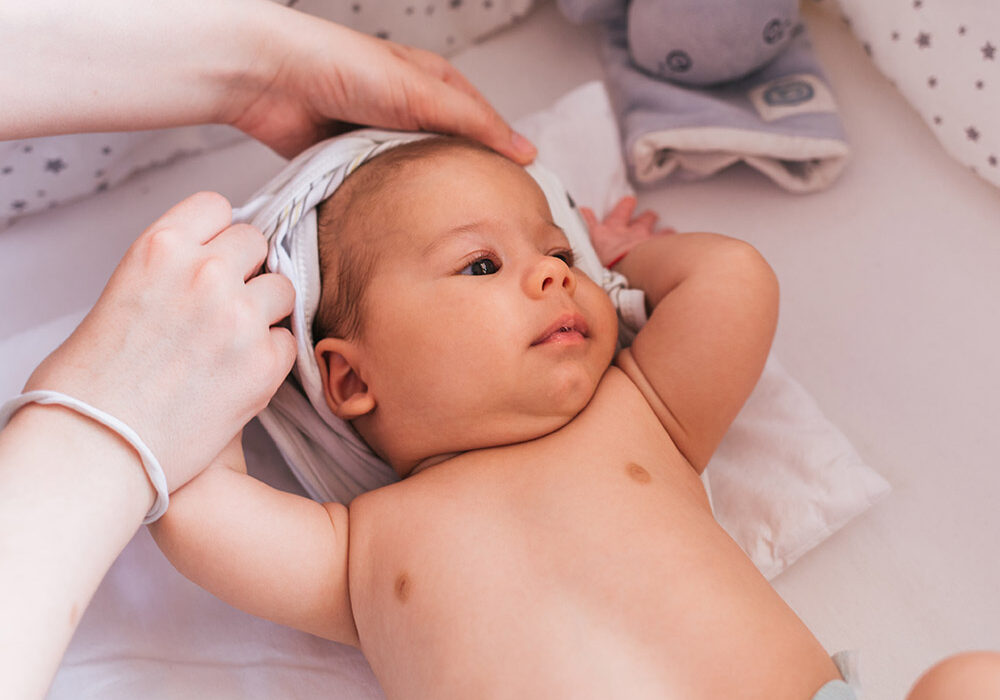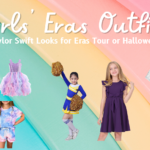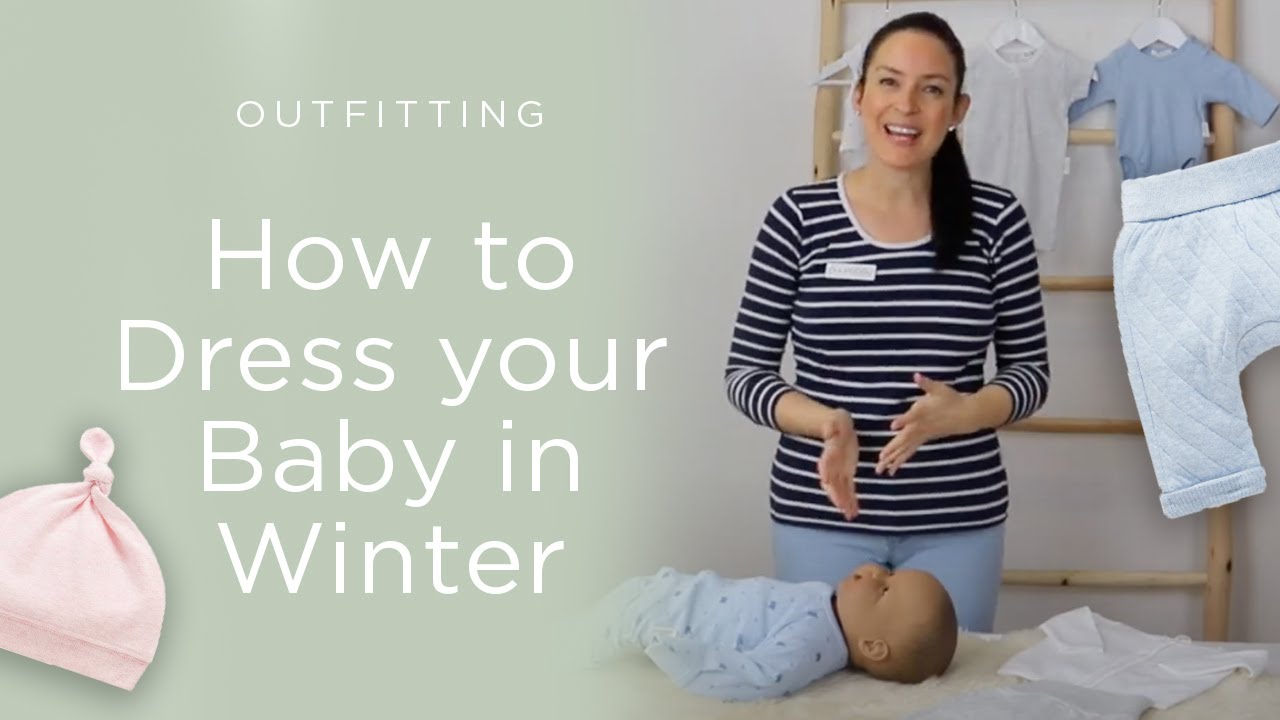Choosing clothes for newborns is both exciting and challenging. Comfort and safety are top priorities.
Newborns have delicate skin and need special care. Selecting the right clothes can be confusing with so many options available. Parents often wonder what fabrics are best, how many outfits to buy, and what sizes to choose. This guide will help you make smart decisions.
From soft materials to practical designs, we’ll cover everything you need to know to keep your baby cozy and happy. Read on to discover simple tips for dressing your newborn in the best clothes.
Understanding Newborn Clothing Needs
Choosing clothes for newborns can be overwhelming. Babies have unique needs that differ from adults. Ensuring their comfort, safety, and weather appropriateness is essential. Let’s explore these aspects in detail.
Comfort And Safety
Comfort and safety are the top priorities when selecting newborn clothes. Soft fabrics are crucial. Look for cotton or organic materials. They are gentle on a baby’s delicate skin. Avoid clothes with rough seams or tags. These can irritate the skin.
Safety features are equally important. Check for loose buttons or embellishments. They can pose choking hazards. Choose clothes with secure fastenings. Snaps or zippers are preferable over buttons. Ensure there are no tight bands around the neck, arms, or legs.
Weather Appropriateness
Dress your newborn according to the weather. Layering is key. In cold weather, use multiple layers. A bodysuit under a warm sweater works well. Add a hat to keep their head warm. Ensure their hands and feet are covered.
In warm weather, choose light and breathable fabrics. Cotton is ideal. A single layer, such as a onesie, is usually sufficient. Keep your baby out of direct sunlight. Use a light blanket for extra protection.
Here’s a simple table to guide you:
| Weather | Clothing |
|---|---|
| Cold | Layers, hats, covered hands and feet |
| Warm | Light fabrics, single layers, avoid direct sunlight |
Choosing The Right Fabric
Choosing clothes for newborns can be a delicate task. Their skin is soft and sensitive, needing special care. One of the most important factors is the fabric. The right fabric can ensure comfort and avoid irritation. Let’s explore the key aspects you should consider.
Softness And Breathability
Newborns have very soft skin. It is essential to choose fabrics that are soft to the touch. Cotton is a great choice. It is soft and breathable, allowing air to flow through and keeping the baby cool.
Another excellent option is bamboo fabric. Bamboo is known for its softness and moisture-wicking properties. This helps keep the baby dry and comfortable.
Here are some fabrics to avoid:
- Wool
- Synthetic fibers
These materials can cause irritation and overheating. Always opt for natural fibers when possible.
Hypoallergenic Materials
Newborns can have sensitive skin and may be prone to allergies. Using hypoallergenic materials can prevent allergic reactions. Organic cotton is a popular choice. It is free from chemicals and pesticides, making it safe for sensitive skin.
Another good option is hemp fabric. Hemp is naturally hypoallergenic and also very durable. This can be a great choice for everyday wear.
Avoid fabrics treated with:
- Dyes
- Perfumes
These can irritate the baby’s skin and cause discomfort. Always check labels to ensure the fabric is free from harmful substances.
By focusing on softness, breathability, and hypoallergenic materials, you can ensure your newborn’s comfort and safety.
Sizing Guide For Newborns
Choosing clothes for your newborn can be overwhelming. The right size ensures comfort and safety. This sizing guide helps new parents navigate newborn clothing sizes.
Understanding Sizes
Newborn clothing sizes vary by brand. Most brands use weight and height as size guides. Typically, newborn sizes fit babies up to 8 pounds. Some brands offer “preemie” sizes for smaller babies.
Always check the brand’s size chart. This ensures a proper fit for your baby. Sizes labeled “0-3 months” may be too big for newborns. Look for specific newborn sizes for the best fit.
Growth Considerations
Babies grow quickly. It’s smart to buy a few sizes up. This prepares you for growth spurts. Clothes that are slightly larger offer more room for movement. They also last longer as your baby grows.
Consider the season and your baby’s age. Buy clothes appropriate for the weather. Think ahead to the next season. This helps you choose the right sizes and styles.
Don’t forget about hand-me-downs. They can be a great resource. Just ensure they fit well and are in good condition.

Credit: www.pinterest.com
Essential Clothing Items
Choosing the right clothes for your newborn can be challenging. You want them to be comfortable and safe. Here are the essential clothing items every newborn needs.
Bodysuits And Onesies
Bodysuits and onesies are a must-have for any newborn. They are versatile and easy to use. Look for ones with snap buttons. Snap buttons make diaper changes easier. They come in different sleeve lengths. Choose short sleeves for warm weather. Choose long sleeves for cooler weather.
Here’s a quick list of benefits:
- Easy diaper changes
- Comfortable fit
- Different sleeve lengths
- Soft materials
Sleepwear
Sleepwear is important for your baby’s comfort. Babies sleep a lot, so they need comfortable clothing. Look for sleepwear made from soft, breathable fabrics. Cotton is a great choice. Avoid clothes with tight elastic bands. They can irritate the baby’s skin.
Consider these features:
- Soft fabrics
- Breathable materials
- Easy-to-use zippers or buttons
Here’s a simple table to help you choose:
| Type | Material | Key Features |
|---|---|---|
| Bodysuits | Cotton | Snap buttons, different sleeve lengths |
| Sleepwear | Cotton | Soft, breathable, easy-to-use zippers |
Layering Techniques
Choosing the right clothes for your newborn can be tricky. Babies are sensitive to temperature changes. Layering is an effective way to keep your baby comfortable. It allows you to add or remove layers as needed. This is crucial for maintaining a stable body temperature.
Mix And Match
Mixing and matching clothes is fun and practical. It helps you create various outfits from a few pieces. Start with basic items like bodysuits and leggings. Neutral colors are versatile. They can be paired with almost anything. Patterns and prints add character to the outfit. They can make your baby look cute.
Consider these essential items for your newborn’s wardrobe:
- Onesies: Soft and comfortable, perfect for layering.
- Leggings: Easy to mix with onesies or shirts.
- Socks: Keep those tiny feet warm.
- Hats: Essential for temperature regulation.
- Cardigans: Easy to put on and take off.
Combining these items allows you to adjust your baby’s outfit for different temperatures.
Seasonal Layering
Seasonal layering keeps your baby comfortable year-round. Different seasons demand different strategies. In colder months, focus on warmth. In warmer months, prioritize breathability.
Here is a table to guide you:
| Season | Key Items | Layering Tips |
|---|---|---|
| Winter | Onesies, sweaters, hats, mittens | Layer with a onesie, sweater, and hat. Add mittens if needed. |
| Spring | Long-sleeve onesies, light cardigans | Start with a long-sleeve onesie. Add a cardigan for cooler days. |
| Summer | Short-sleeve onesies, sun hats | Use a short-sleeve onesie. Add a sun hat for protection. |
| Fall | Long-sleeve shirts, light jackets | Layer with a long-sleeve shirt and a light jacket. |
By using these layering techniques, you can ensure your newborn stays comfortable in any season. Always check your baby’s temperature by touching their neck. Adjust layers accordingly to keep them cozy and happy.
Dressing For Different Seasons
Choosing clothes for a newborn can be a delightful yet challenging task. The key is to ensure your baby stays comfortable and safe throughout the different seasons. Here are some tips for dressing your newborn during winter and summer.
Winter Clothing
In winter, keeping your baby warm is essential. Babies lose heat faster than adults. Dressing them in layers helps retain warmth.
- Onesies: Use long-sleeve onesies as a base layer.
- Thermal Wear: Add a layer of thermal wear for extra warmth.
- Socks and Mittens: Keep those tiny feet and hands warm.
- Hats: Cover their head to prevent heat loss.
- Blankets: Use soft, breathable blankets for added warmth.
Ensure that the clothes are not too tight. Tight clothing can restrict movement and cause discomfort.
Summer Outfits
Summer requires light and breathable clothing. The goal is to keep your baby cool and comfortable.
- Onesies: Opt for short-sleeve or sleeveless onesies.
- Light Cotton Clothes: Cotton allows the skin to breathe.
- Sunscreen and Hats: Protect their skin from the sun.
- Light Blankets: Use light blankets for naps.
Avoid overdressing. Overheating can lead to discomfort and rashes.
| Season | Essential Clothing |
|---|---|
| Winter | Long-sleeve onesies, thermal wear, socks, mittens, hats, blankets |
| Summer | Short-sleeve onesies, light cotton clothes, sunscreen, hats, light blankets |
Adjust the layers based on the room temperature and your baby’s comfort. Always prioritize comfort over style when dressing your newborn.
Practicality And Ease Of Use
Choosing clothes for newborns can be a delightful yet challenging task. It’s important to prioritize practicality and ease of use. Newborns require frequent diaper changes and constant care. Ensuring their clothes are practical helps simplify these tasks.
Easy Access For Diaper Changes
Newborns need frequent diaper changes. Clothes with easy access to the diaper area are essential. Look for onesies with snap closures at the bottom. These make diaper changes quick and hassle-free. Avoid outfits with too many buttons or zippers. They can be time-consuming and frustrating.
Consider gowns with elastic bottoms. They allow easy access for diaper changes without removing the whole outfit. Overalls with snaps along the legs are also a good choice. They provide easy access while keeping your baby warm.
Simple Fastenings
Clothes with simple fastenings are crucial for newborns. Velcro, snaps, and elastic waistbands are the best options. They make dressing and undressing your baby easier. Buttons can be tricky and time-consuming. Velcro or snaps save time and reduce stress.
Look for clothes with wide neck openings. They make it easier to pull the garment over your baby’s head. Stretchy materials are also beneficial. They allow for easy dressing without causing discomfort to your baby.
Ensuring clothes have simple fastenings can make daily routines smoother. It allows you to focus more on your baby and less on their clothes.
Safety Considerations
Choosing clothes for newborns requires a focus on safety. Newborns have delicate skin and need extra protection. It’s important to avoid certain features in their clothing.
Avoiding Loose Buttons
Loose buttons can be a choking hazard for newborns. Always check if buttons are securely sewn. If buttons feel loose, reinforce them with thread. Even better, choose clothes without buttons.
Checking Seams And Labels
Seams and labels can irritate a newborn’s sensitive skin. Inspect clothes for rough seams. Opt for clothes with flat seams to reduce irritation. Labels can also be a problem.
- Look for clothes with printed labels.
- If labels are present, cut them off carefully.
Ensuring the safety of your baby’s clothes can help prevent discomfort. Follow these tips to provide the safest clothing options for your newborn.
Budget-friendly Shopping Tips
Shopping for newborn clothes can be exciting, but it can also be expensive. Budget-friendly tips can help you get the best for your baby without breaking the bank. Focus on essentials, consider second-hand options, and be smart with your choices.
Prioritizing Essentials
When it comes to newborns, essentials are key. Here is a list of must-have items:
- Onesies
- Sleepers
- Swaddles
- Socks
- Hats
Buy neutral colors. They are versatile and can be used for future siblings. Choose comfortable fabrics like cotton. Babies have sensitive skin.
Use the following table to compare prices of essential items:
| Item | Price Range |
|---|---|
| Onesies | $5 – $20 |
| Sleepers | $10 – $25 |
| Swaddles | $10 – $30 |
| Socks | $2 – $10 |
| Hats | $5 – $15 |
Second-hand Options
Consider buying second-hand clothes. They are often in great condition. Babies outgrow clothes quickly. Look for the following sources:
- Thrift stores
- Online marketplaces
- Local parent groups
Second-hand clothes are budget-friendly and eco-friendly. Make sure to wash them thoroughly. Use gentle detergents to avoid irritation.
Hand-me-downs from friends or family are also great. They are usually free and come with love.

Credit: www.patpat.com
Sustainable Clothing Choices
Selecting sustainable clothing for newborns involves choosing organic fabrics. Prioritize materials like cotton and bamboo. These fabrics are gentle on a baby’s skin and eco-friendly.
Choosing sustainable clothes for newborns is essential. They are gentle on your baby’s skin. They also help protect our planet. Sustainable options come in various forms. Let’s explore some of the best choices for your little one.Organic Cotton
Organic cotton is a popular choice for baby clothes. It is grown without harmful chemicals. This makes it safe for your baby’s delicate skin. Organic cotton is also soft and breathable. This helps keep your baby comfortable. Additionally, it is durable and long-lasting. You can find organic cotton clothes in many styles and colors. They are perfect for your newborn’s wardrobe.Eco-friendly Brands
Many brands now focus on eco-friendly practices. These brands use sustainable materials. They also follow ethical manufacturing processes. Choosing such brands supports a healthier planet. These brands often offer stylish and comfortable options. You can find everything from onesies to pajamas. Look for certifications like GOTS or OEKO-TEX. These labels ensure the clothes are safe and eco-friendly. Supporting eco-friendly brands helps create a better future for your child. “`Handling And Care
Handling and care of newborn clothes is crucial. Babies have sensitive skin that can react to certain fabrics or detergents. Ensuring proper handling and care keeps clothes soft, clean, and gentle on their skin.
Washing Newborn Clothes
Wash newborn clothes before the first use. Use a mild, fragrance-free detergent. This helps prevent skin irritations. Wash baby clothes separately from the family laundry. This reduces the risk of transferring dirt or strong detergent residues. Choose a gentle wash cycle. Use cold or warm water, not hot. Hot water can shrink clothes and damage delicate fabrics.
Stain Removal Tips
Act quickly when a stain happens. Fresh stains are easier to remove. Rinse the stained area with cold water. Avoid hot water; it sets stains. Use a baby-friendly stain remover. Spray or apply directly to the stain. Let it sit for a few minutes. Wash the garment in the washing machine. Check the stain before drying. If it persists, repeat the process.
Preparing For Special Occasions
Choosing clothes for newborns involves considering comfort, fabric, and size. Opt for soft, breathable materials to keep them cozy. Ensure easy access for diaper changes.
Choosing clothes for your newborn can be fun, especially for special occasions. These moments create memories. You want your baby to look adorable and feel comfortable. Let’s explore some tips for picking the perfect outfits for those memorable events.Holiday Outfits
Holidays are magical times. Your newborn’s outfit should reflect that magic. Think about the season and the holiday theme. For winter holidays, cozy knits and festive colors work well. For summer holidays, light fabrics keep your baby cool. Always check the fabric. Soft, breathable materials like cotton are best. Avoid anything that might irritate your baby’s skin.Photo Shoot Attire
Photo shoots capture special moments. Choose outfits that highlight your baby’s cuteness. Soft pastels and neutral tones photograph well. Avoid bold patterns. They can distract from your baby’s face. Consider the location and theme of the photo shoot. A beach setting calls for different clothes than a studio session. Remember to bring extra clothes. Babies can be messy. A quick change can save the day. “`Common Mistakes To Avoid
Choosing clothes for newborns can be both exciting and overwhelming. New parents often make some common mistakes. Avoid these to ensure a comfortable and practical wardrobe for your baby.
Overbuying Clothes
Newborns grow quickly. It is easy to overestimate the amount of clothes they need. Buying too many clothes can lead to waste. Many outfits may be outgrown before they are even worn. Stick to basic essentials. Buy only what you need for the first few months. Save money and space by avoiding overbuying.
Ignoring Comfort
Comfort is crucial for newborns. Choose soft, breathable fabrics. Avoid clothes with scratchy tags or rough seams. Tight clothing can restrict movement and cause discomfort. Look for loose-fitting outfits. Ensure they allow easy movement. Prioritize your baby’s comfort over fashion. Happy babies are usually comfortable babies.

Credit: thetrendytoddlers.com
Frequently Asked Questions
What Fabric Is Best For Newborn Clothes?
Cotton is best. It’s soft, breathable, and gentle on newborn skin.
How Many Outfits Does A Newborn Need?
About 7-10 outfits. Newborns need frequent changes due to spit-ups and diaper leaks.
Should I Buy Newborn Or 0-3 Months Size?
Buy both sizes. Newborns grow fast and will soon fit into 0-3 months clothes.
What To Avoid In Newborn Clothing?
Avoid clothes with buttons, zippers, and rough seams. They can irritate a newborn’s skin.
Conclusion
Choosing clothes for newborns doesn’t have to be difficult. Prioritize comfort and safety. Soft, breathable fabrics work best. Check for easy snaps and zippers. Avoid clothes with small buttons or decorations. Neutral colors and simple designs are versatile. Always consider the baby’s delicate skin.
Follow these tips, and your baby will stay cozy and stylish. Happy shopping for your little one!







